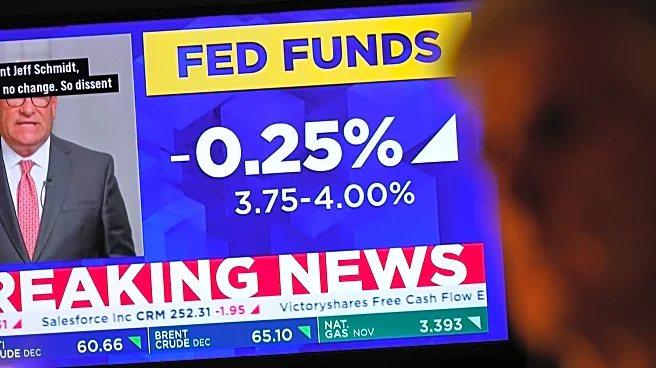What's Happening?
Gold prices have reached a record high of approximately $3,500 per ounce in April 2025, surpassing previous inflation-adjusted highs from February 1980. This surge is attributed to persistent inflation pressures
and geopolitical uncertainty, particularly trade tensions between the U.S. and China. The price of gold has increased by over 60% since the beginning of 2025, with experts predicting further rises potentially reaching $5,000 per ounce by 2026. Historically, gold has been considered a safe haven during times of economic instability, and its current bull run reflects renewed investor demand.
Why It's Important?
The rising gold prices signify a shift in investor sentiment towards safer assets amidst global economic challenges. This trend impacts various stakeholders, including investors seeking to hedge against inflation and geopolitical risks. The increase in gold prices can affect industries reliant on gold, such as jewelry and electronics, due to higher material costs. Additionally, central banks may adjust their reserves in response to these price changes, influencing monetary policy decisions. The ongoing bull run in gold prices highlights the broader economic uncertainties and the potential for continued volatility in financial markets.
What's Next?
As gold prices continue to rise, investors and financial institutions may reassess their portfolios to include more gold as a hedge against inflation and geopolitical risks. Central banks might increase their gold reserves, impacting global monetary policies. The potential for gold prices to reach $5,000 per ounce by 2026 could lead to increased investment in gold mining and exploration activities. Stakeholders will closely monitor economic indicators and geopolitical developments that could further influence gold prices.
Beyond the Headlines
The current surge in gold prices underscores the complex interplay between economic conditions and investor behavior. It raises questions about the sustainability of relying on gold as a safe haven and the implications for long-term investment strategies. The ethical considerations of gold mining, including environmental impacts and labor practices, may gain attention as demand for gold increases. Additionally, the cultural significance of gold as a symbol of wealth and security continues to influence its perceived value.













